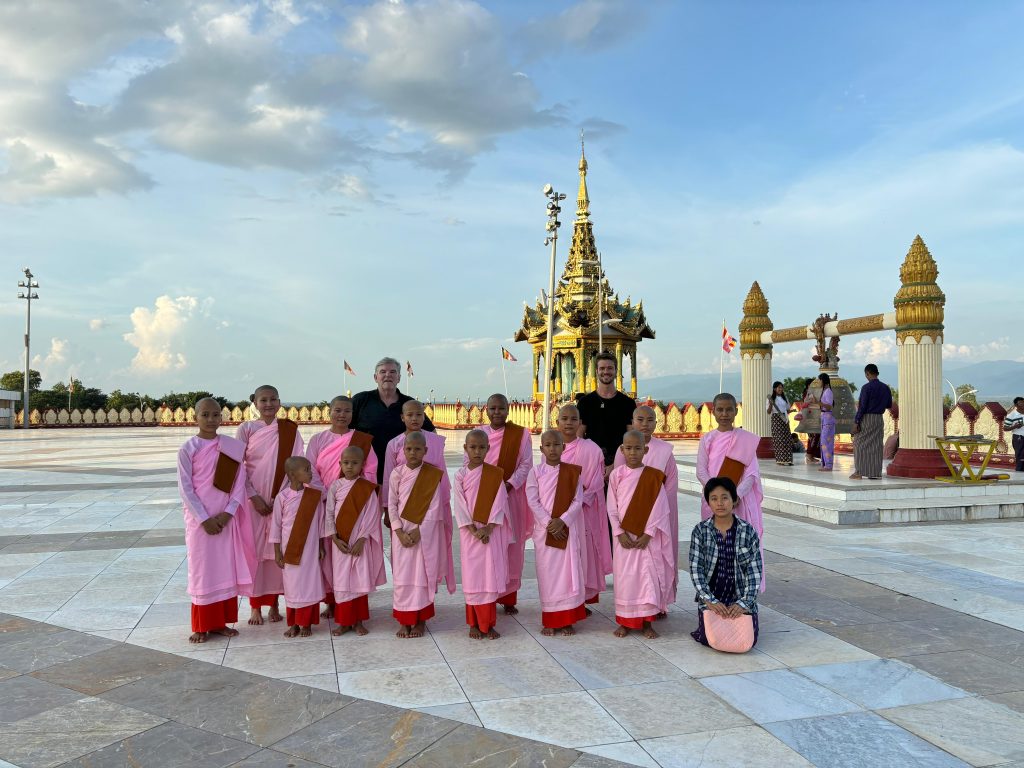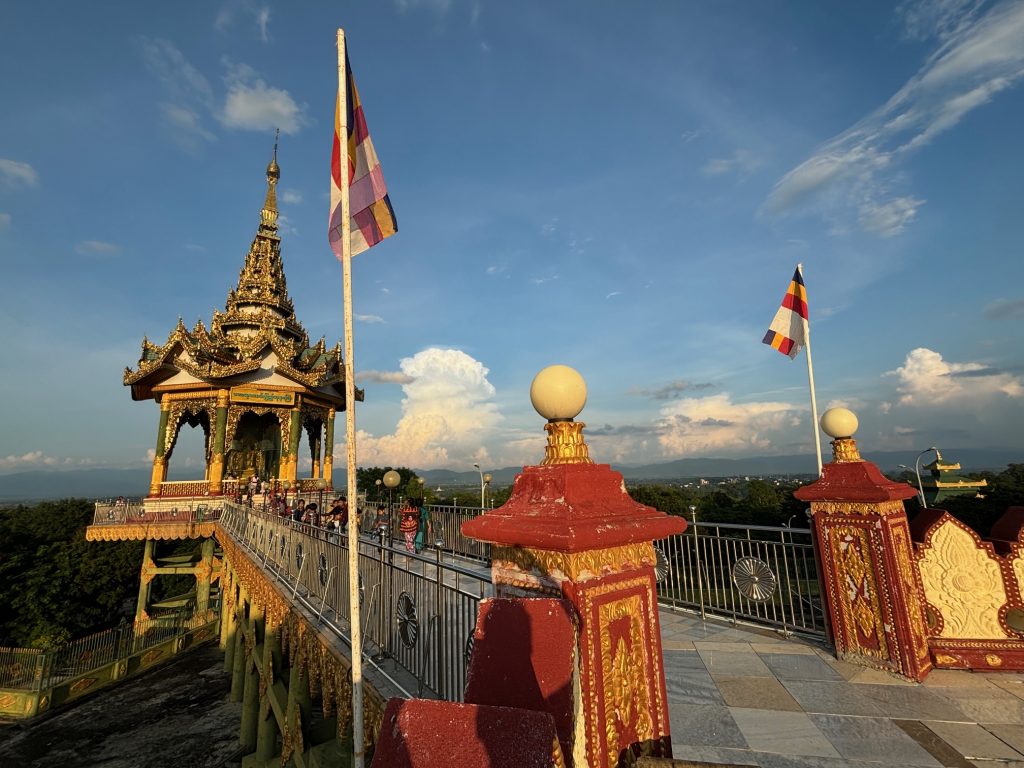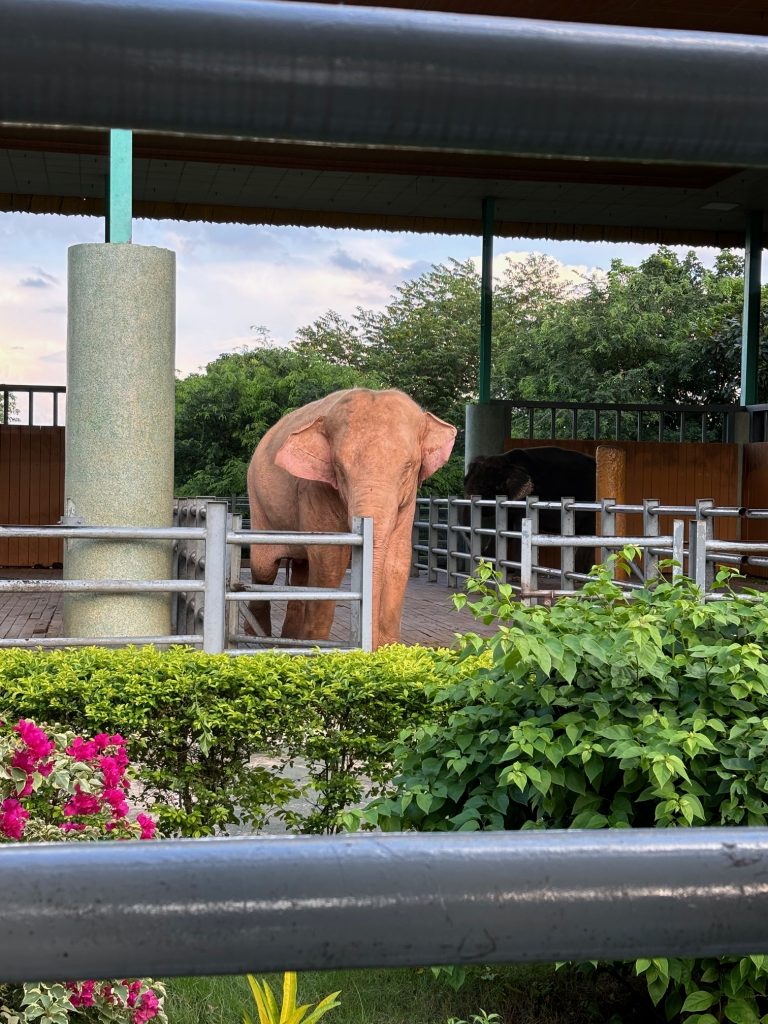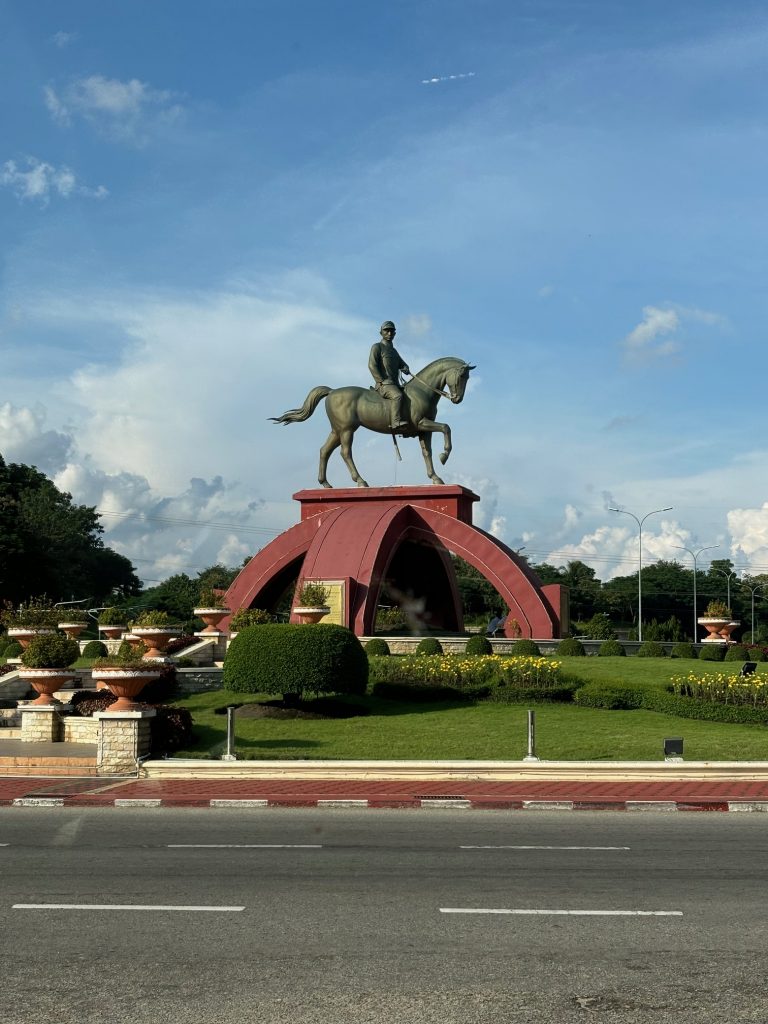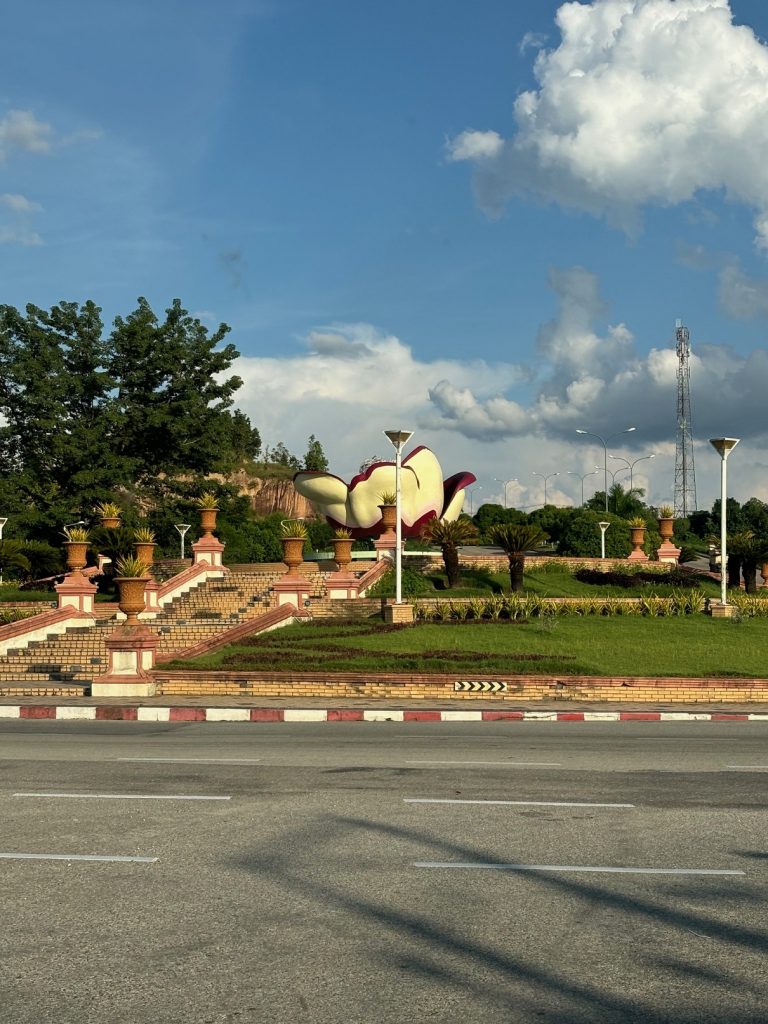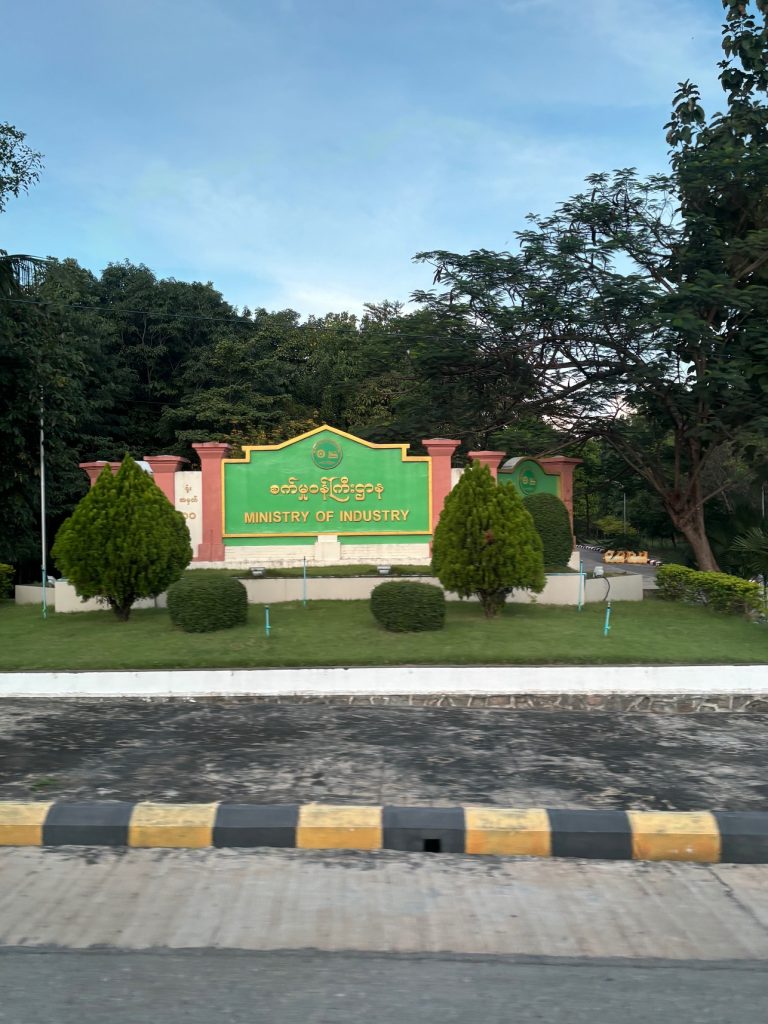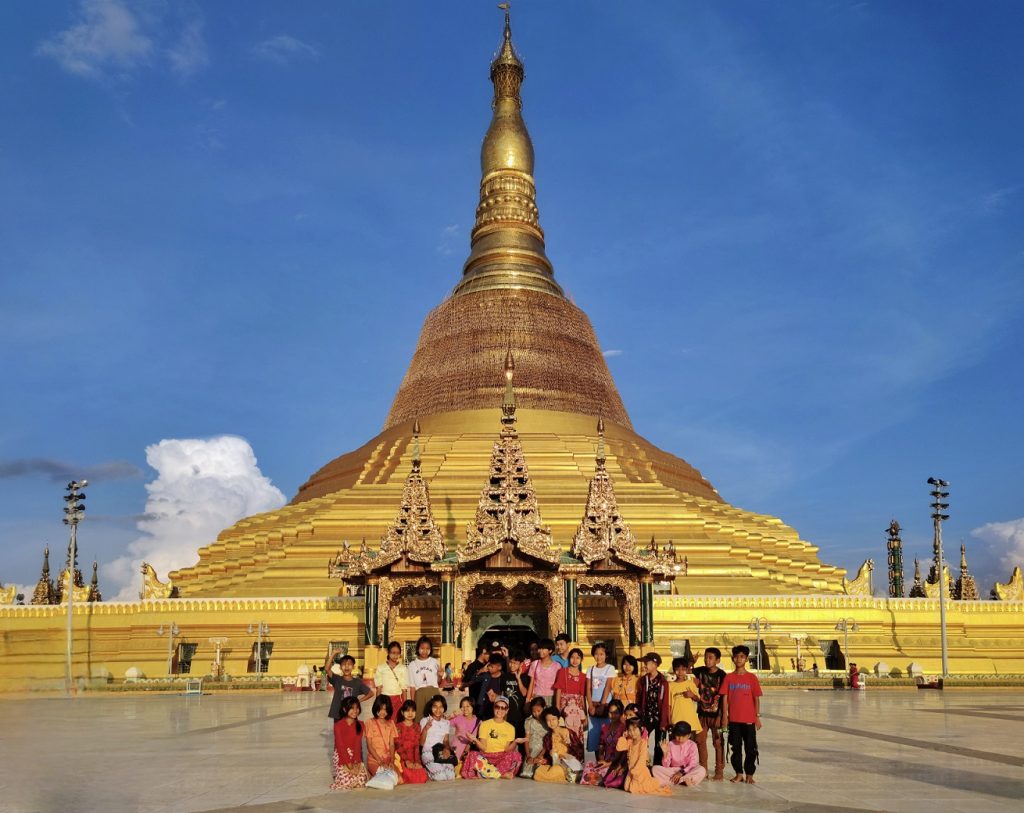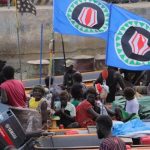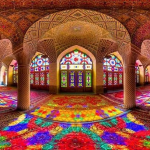If you’re looking for a destination that’s off the beaten path, Naypyidaw, Myanmar’s eerie capital, offers a unique adventure.
Known as a “ghost town,” this sprawling city was designed with grandeur, covering an area four times the size of London, yet housing only about a million people. Following the pandemic and military coup, tourist numbers have dwindled, making it one of the least visited capitals in the world.
To read about Kangbashi click here.
Why Was Naypyidaw Built?
Naypyidaw wasn’t built by accident. The former military regime, led by Than Shwe, planned the city in the early 1990s as a new administrative hub. Strategically located in the center of the country, it was intended to better manage Myanmar’s resources—whether it’s minerals, gems, or natural gas—and showcase the regime’s power. Yangon, the previous capital, had become too crowded and politically sensitive.
By moving the capital to a more isolated area, the regime hoped to avoid large-scale protests and labor strikes while asserting control. The capital was officially named on Armed Forces Day in 2005, and government workers began moving there the following year.
To read about Yangon street food click here.
Challenges in Filling the City
Despite the government’s efforts, Naypyidaw never truly came to life. Initially, government staff were given free housing and didn’t have to pay utility bills for the first few years, but even with such incentives, regular people had little reason to move. The cost of living was high, jobs were scarce, and the city was hard to navigate. For the average Burmese citizen, family and work ties to Yangon and other parts of Myanmar made relocation undesirable.
For foreigners, Naypyidaw remains challenging to visit. While it’s possible to get there, most tourists who visit Myanmar stick to popular spots like Yangon or Bagan. Even during Myanmar’s democratic era, Naypyidaw was rarely a destination for foreign tourists.
How to Visit Naypyidaw
If you’re curious about visiting Naypyidaw, it’s not impossible, but it requires some planning. Traveling by train from Yangon will take about 12 hours, while buses or cars can make the trip in 5-6 hours. Domestic flights are available but expensive and infrequent.
In most cases, foreigners will need a permit to enter Naypyidaw, which can be arranged through a local travel agency. There are police and military checkpoints along the way, and once inside the city, you’ll likely stay in one of the large hotels, some of which are so massive that golf carts are used to transport guests.
Getting around the city is no small feat—motorbike taxis or tuk-tuks are available but hard to find, and the sheer size of the city means you’ll need a guide or driver to see the sights.
What to See in Naypyidaw
Despite its ghostly reputation, there are still some worthwhile things to see in Naypyidaw. Most of the ministries and military compounds are hidden behind walls and fences, and only the Chinese and Indian embassies have moved to the capital, with most foreign missions remaining in Yangon. However, you can still see the Presidential Palace and the Supreme Court.
The Uppatasanti Pagoda is one of the city’s most striking landmarks. Built in 2009, this replica of Yangon’s famous Shwedagon Pagoda offers panoramic views of the flat plains and distant mountains. Friendly locals often approach foreign visitors to chat and take photos with the golden pagoda as a backdrop. Near the pagoda, you can see the famous white royal elephant, which is sometimes fed sugarcane by visitors.
What makes Naypyidaw fascinating is the sense of surrealism that permeates the city. Its vast empty streets, including the famous 20-lane highway, and meticulously maintained yet underutilized infrastructure, reflect the grand ambitions—and perhaps the misplaced confidence—of Myanmar’s military regime. At night, lanterns illuminate the empty streets, offering an eerie contrast to Yangon, where power outages are frequent.
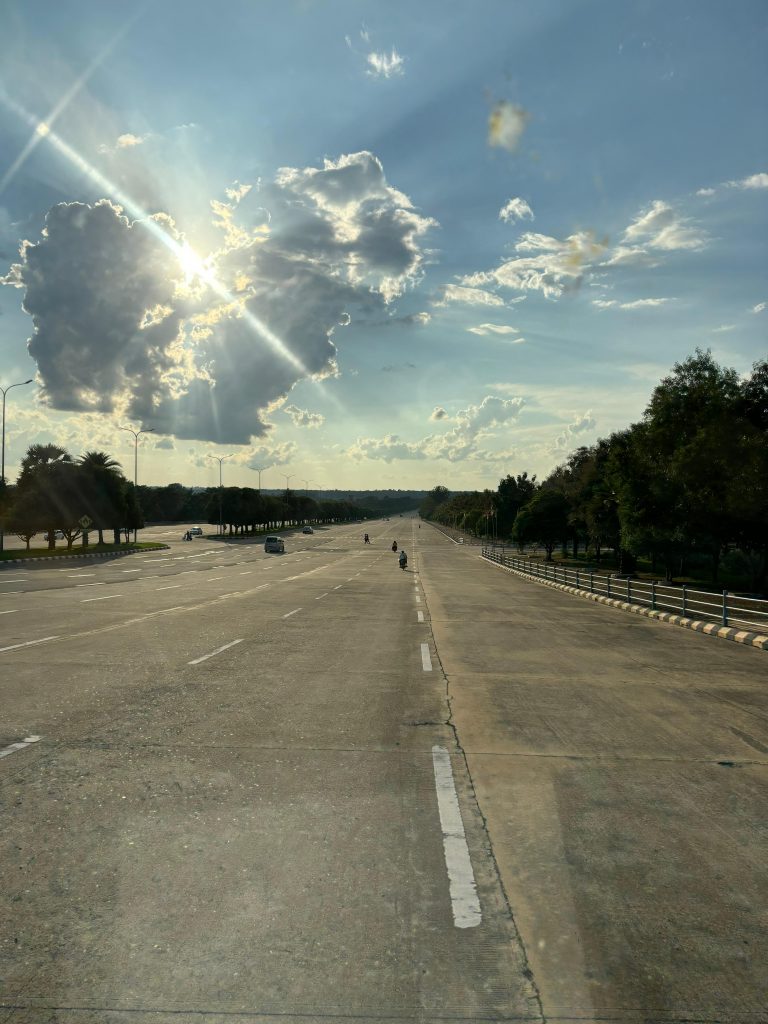
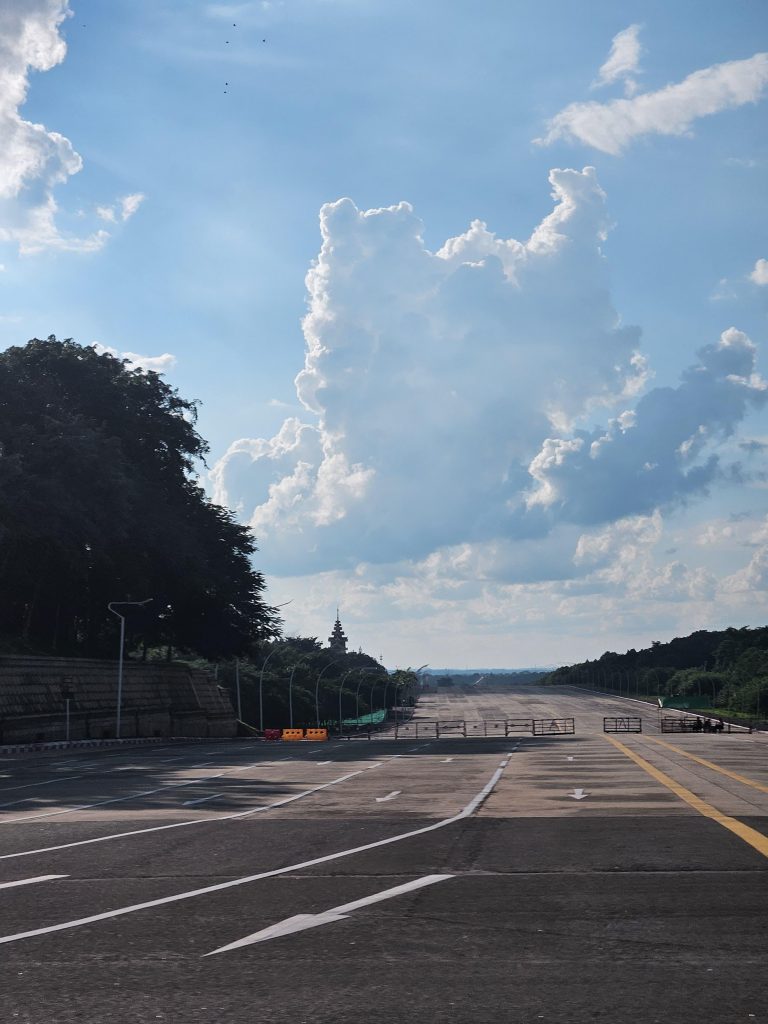
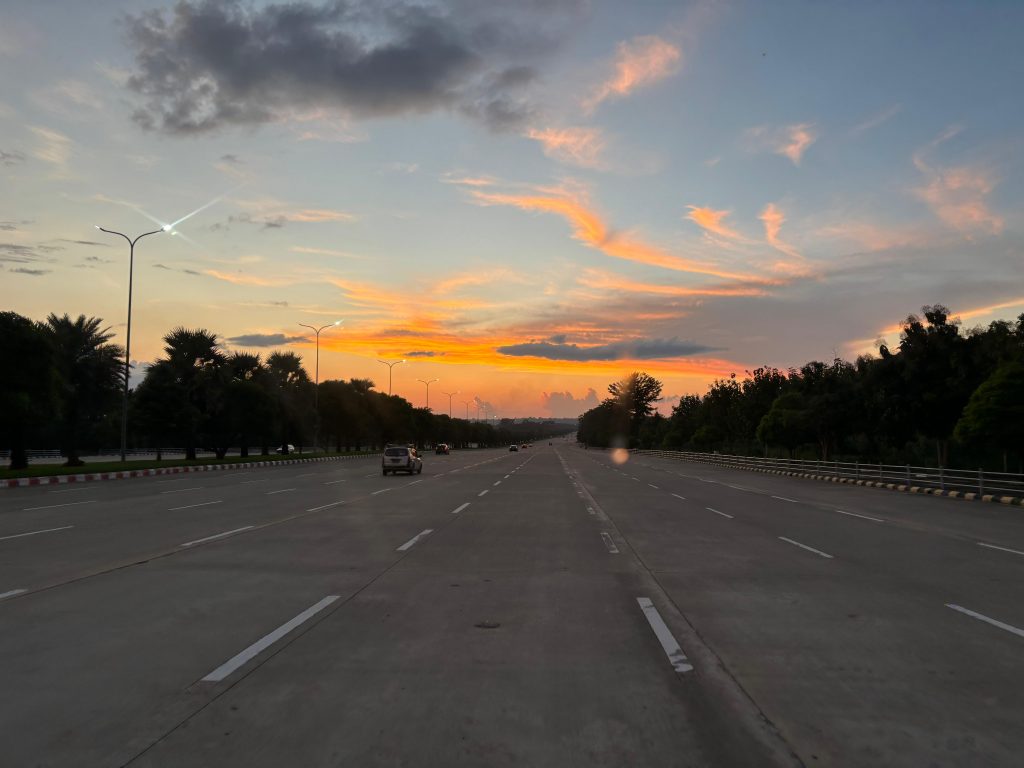
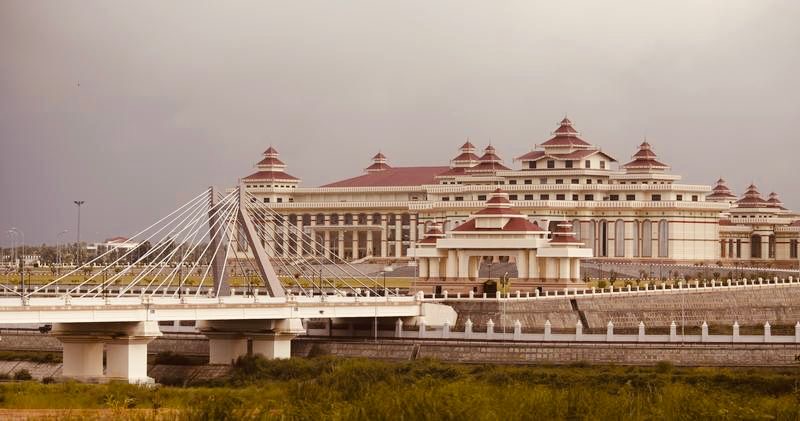
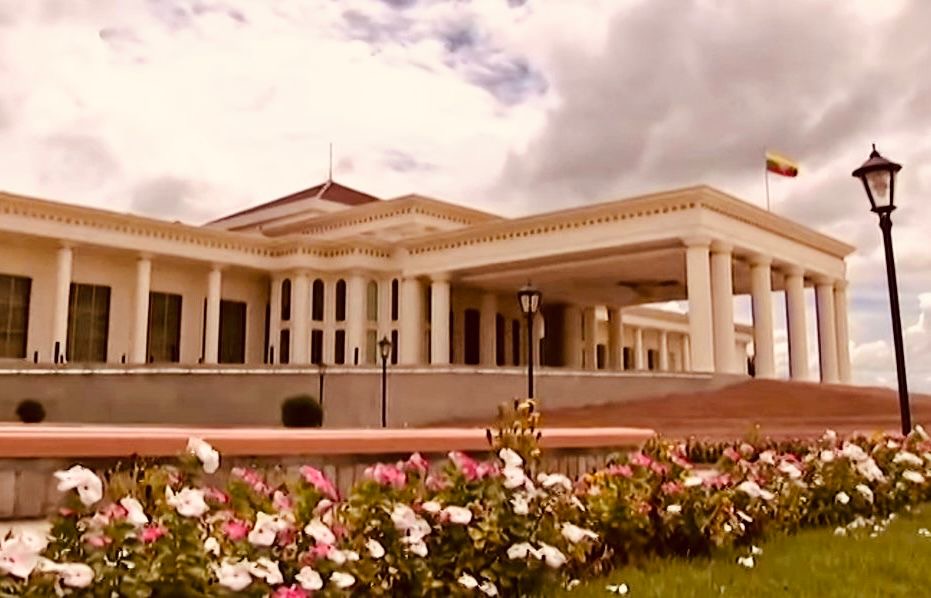
The Night Market
For a more human touch, head to the night market. Here, you’ll encounter local workers and long-time residents from nearby Pyin Ma Nea. Fresh fruit, traditional Burmese street food, and the locals’ curious yet respectful interest in foreigners give you a glimpse into life in Naypyidaw.
While you won’t bump into many government officials—most live and dine in their own areas far from the night market—the experience offers a rare insight into daily life in one of the world’s strangest capitals.
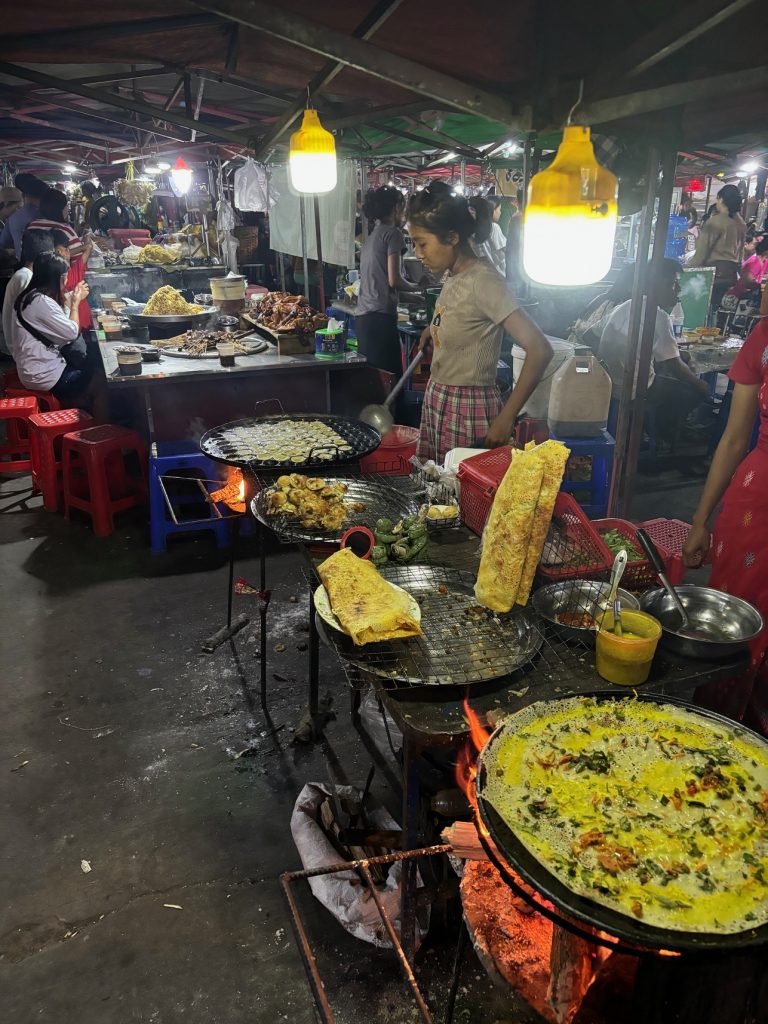
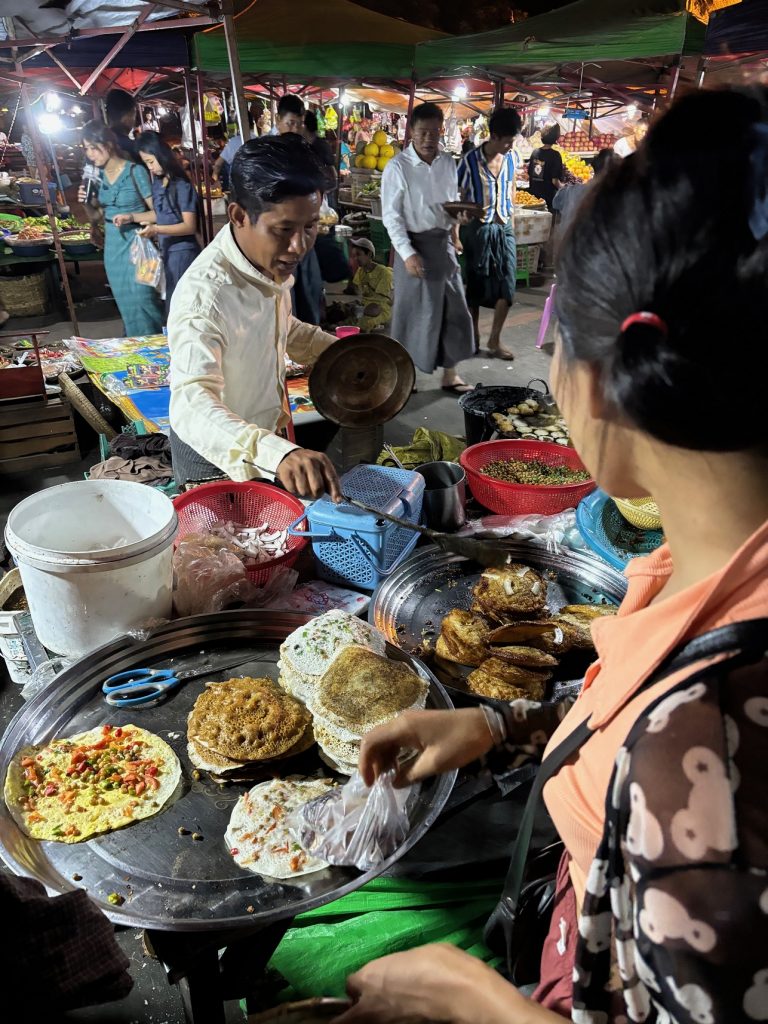
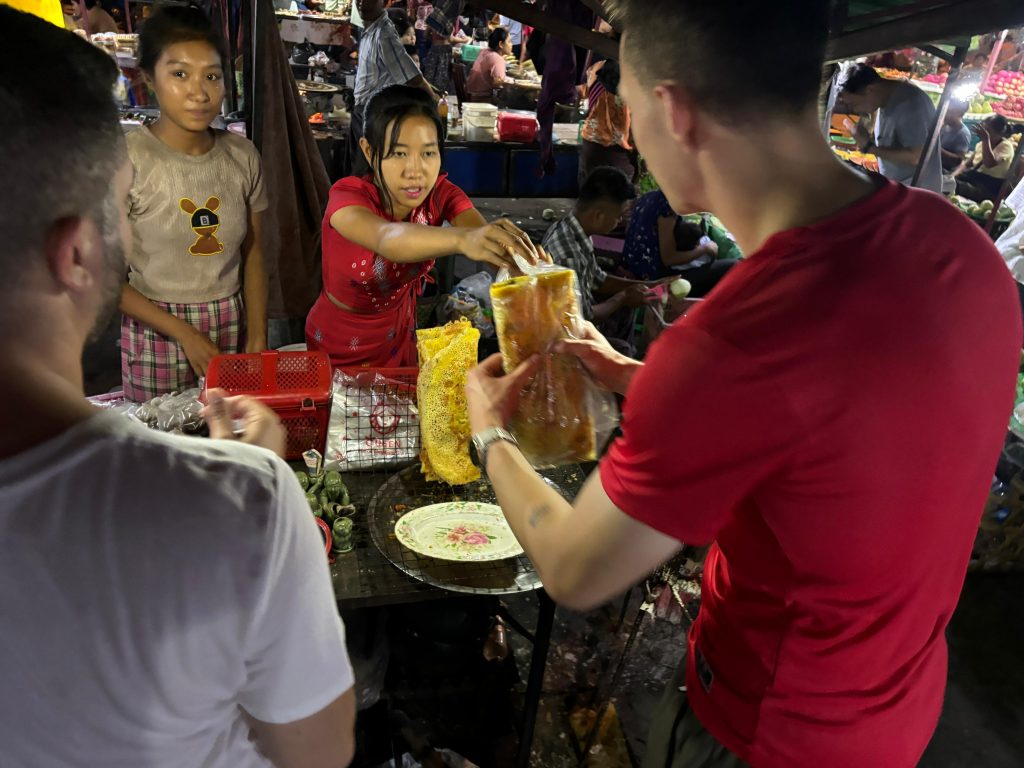
Why Visit Naypyidaw?
Naypyidaw’s unique atmosphere is its main attraction. As a symbol of the regime’s grandiosity and isolation, the city offers a sobering reminder of how detached governments can become from the realities of daily life. The sheer size of the city, the absence of people, and the bizarrely large roads make it feel like a dystopian dreamscape.
If you’re the kind of traveler who likes to see places that challenge the conventional tourist trail, Naypyidaw is worth a visit. It’s not a city that reveals itself easily, but with the right guide and local knowledge, you’ll uncover its hidden stories—and maybe even feel the presence of its ghosts.
At Young Pioneer Tours, we can arrange the necessary permits, transportation, and accommodations to help you make the most of your trip to Naypyidaw. Click the link for our Myanmar Tours.
